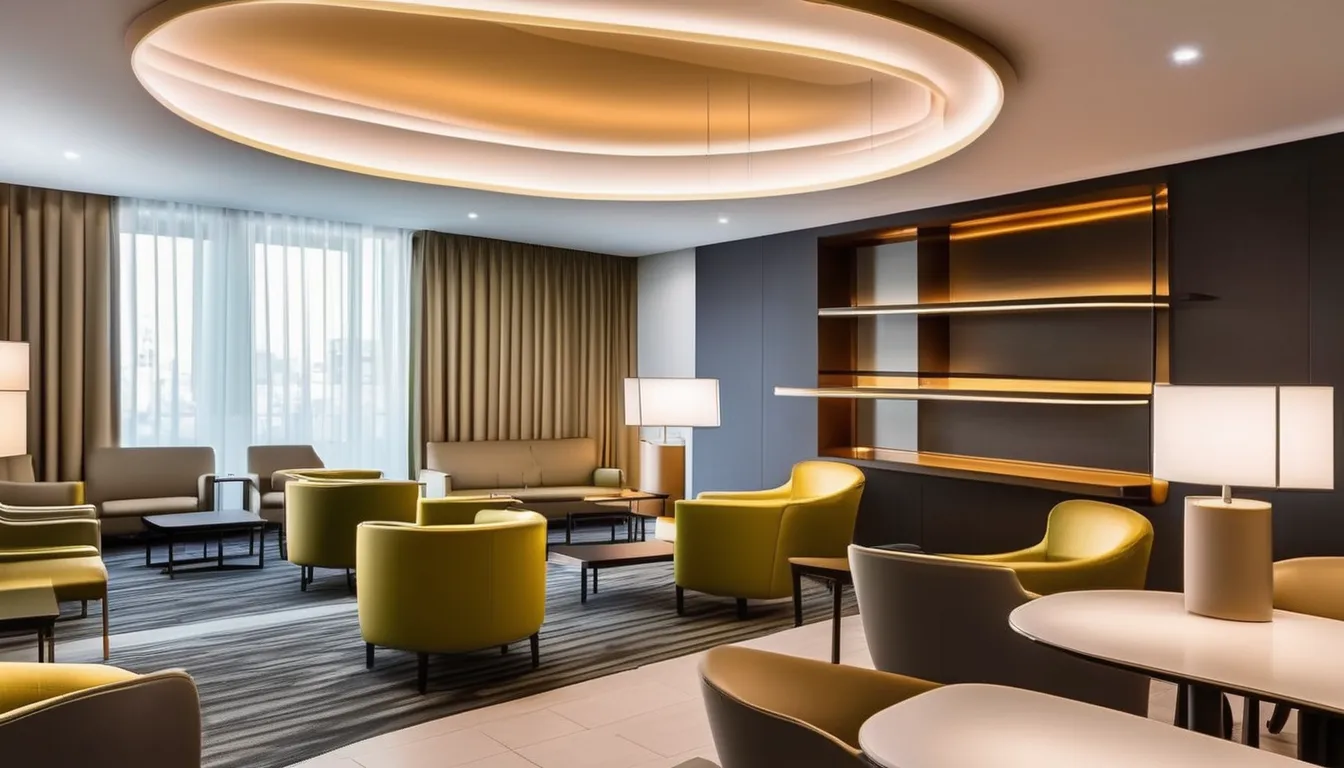When you consider the atmosphere of a hotel, lighting often plays a more vital role than you might think. It’s not just about illumination; it’s about creating an experience that resonates with guests. A hotel lighting studio specializes in this intricate balance, working alongside architects and designers to develop custom solutions that reflect the hotel’s identity and enhance its spaces. But how do they achieve this blend of functionality and artistry? Understanding the elements that contribute to effective lighting design could change your perspective on what truly makes a hotel feel welcoming.
Importance of Lighting in Hotels
Understanding the importance of lighting in hotels can significantly enhance the guest experience. You mightn’t realize it, but lighting plays a crucial role in setting the mood and atmosphere throughout the property. When guests walk into a hotel, the first impression is often influenced by the lighting. Well-placed, warm lights can create an inviting ambiance, while harsh or dim lighting can make spaces feel unwelcoming.
Good lighting directs attention to key areas, like the reception desk or dining spaces, ensuring guests feel both comfortable and engaged. It also highlights architectural features and artwork, enhancing the overall aesthetic.
You should consider how different lighting affects the perception of space; brighter areas may feel more spacious, while softer lighting can create intimacy in lounges or restaurants.
Moreover, energy-efficient lighting not only reduces costs but also contributes to sustainability efforts, appealing to eco-conscious travelers.
Ultimately, by understanding and implementing effective lighting strategies, you can elevate your hotel’s brand, foster positive guest experiences, and encourage repeat visits.
Elements of Effective Lighting Design
Effective lighting design in hotels involves several key elements that can elevate the overall guest experience. When you focus on these aspects, you create an inviting atmosphere that enhances comfort and functionality.
- Layering: Combine ambient, task, and accent lighting to provide a balanced illumination. Ambient lighting sets the mood, task lighting helps with activities, and accent lighting highlights architectural features or artwork.
- Color Temperature: Choose the right color temperature to evoke specific feelings. Warm tones create a cozy environment, while cooler tones can stimulate energy and focus.
- Flexibility: Implement adjustable lighting options. This allows guests to tailor the lighting to their preferences, whether they’re winding down for the night or gearing up for a business meeting.
- Sustainability: Use energy-efficient fixtures and smart technology. This not only reduces energy costs but also appeals to environmentally conscious guests.
Custom Lighting Solutions for Different Spaces
Custom lighting solutions can transform various hotel spaces, tailoring the ambiance to meet specific needs and enhance guest satisfaction.
In guest rooms, you can create a cozy atmosphere with warm, dimmable lights that invite relaxation. Think about using bedside reading lamps with adjustable brightness so guests can enjoy their books without disturbing others.
In lobbies, you’ll want to make a bold statement. Consider dramatic chandeliers or modern pendant lights that draw guests’ eyes and create a welcoming vibe.
Layering lighting, from ambient to accent, can guide guests through the space, helping them feel at ease.
For dining areas, the right lighting can elevate the dining experience. Incorporate softer, warmer tones to create intimacy, while ensuring task lighting is bright enough for menus.
You might also use decorative fixtures to add character and charm to the space.
Collaboration With Architects and Designers
Collaboration with architects and designers is key to achieving a cohesive vision for hotel lighting. When you work closely with these professionals, you ensure that the lighting design complements the overall architecture and enhances the guest experience.
Here are four essential aspects of effective collaboration:
- Understanding the Vision: You should engage in open discussions to grasp the architect’s and designer’s vision. This helps align your lighting concepts with the desired atmosphere and style of the hotel.
- Material Coordination: By sharing insights about materials and finishes, you can select lighting fixtures that harmonize with other design elements. This attention to detail creates a unified aesthetic.
- Functional Integration: Collaborating allows you to integrate lighting solutions seamlessly into the architecture, considering aspects like natural light, sightlines, and space utilization.
- Feedback Loop: Establishing a continuous feedback loop is crucial. Regular check-ins help refine the lighting design based on the evolving project needs and ensure that it meets both aesthetic and functional criteria.
Trends in Hotel Lighting Design
Embracing the latest trends in hotel lighting design can transform a guest’s experience and set a property apart in a competitive market. To keep guests captivated, you should focus on creating versatile lighting that adapts to various moods and occasions. Layered lighting, combining ambient, task, and accent lights, is a must-have for showcasing architectural features and artwork.
Here’s a quick overview of the top trends you can implement:
| Trend | Description |
|---|---|
| Smart Lighting | Integrates with technology for control via apps, enhancing convenience. |
| Sustainable Solutions | Uses energy-efficient LEDs and eco-friendly materials to reduce environmental impact. |
| Custom Fixtures | Unique, bespoke designs tailored to your hotel’s theme elevate aesthetics. |
| Warm Color Palettes | Soft, warm hues create an inviting atmosphere, encouraging relaxation. |
Conclusion
In conclusion, a iluminacion hoteles lighting studio is essential for creating custom lighting solutions that enhance your hotel’s ambiance. By focusing on effective design elements and collaborating with architects and designers, you can transform various spaces to elevate guest experiences. Staying updated on the latest trends ensures your lighting remains innovative and inviting. Ultimately, investing in thoughtful lighting design not only makes a lasting impression on visitors but also reinforces your hotel’s unique identity and charm.

